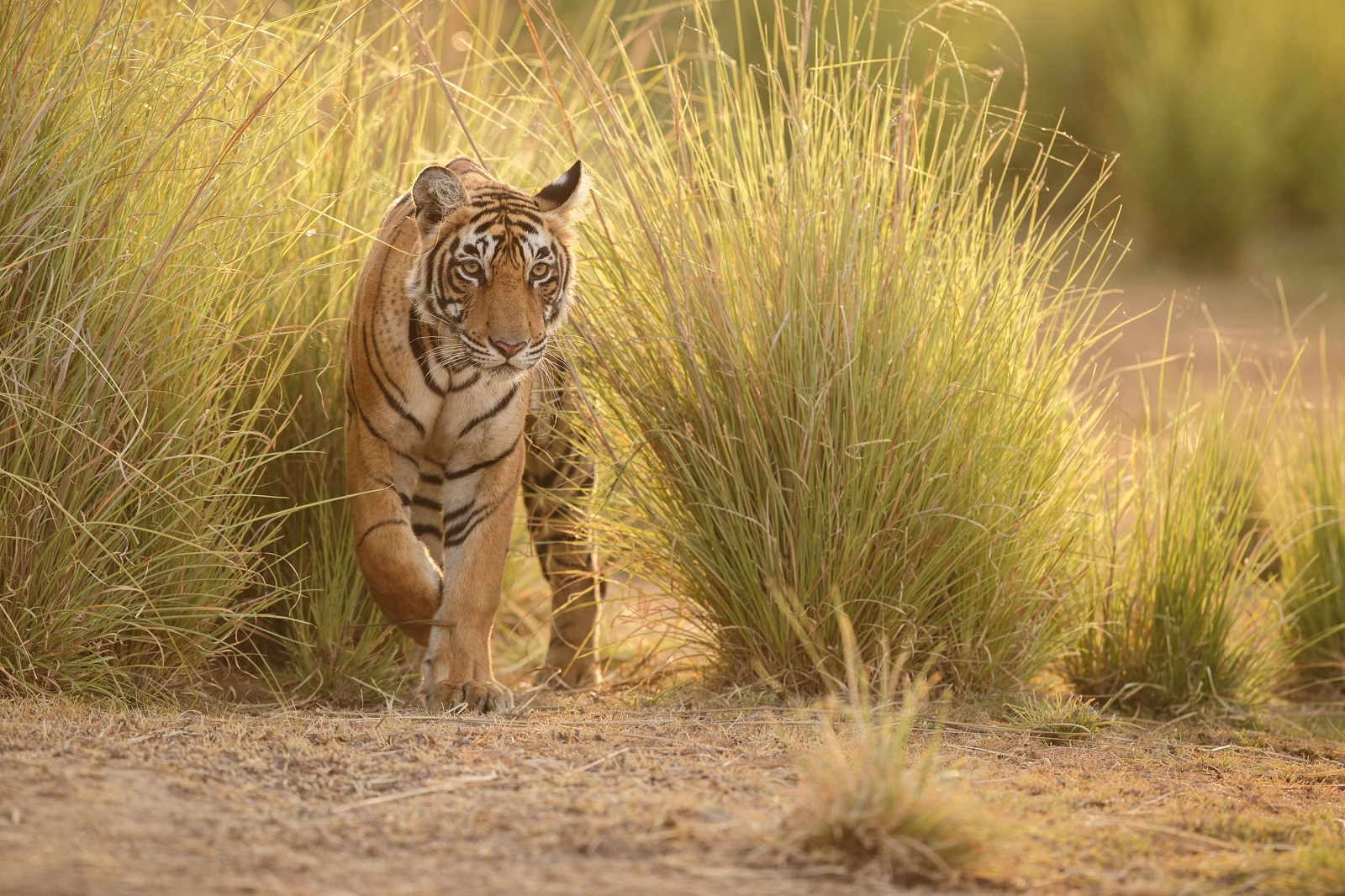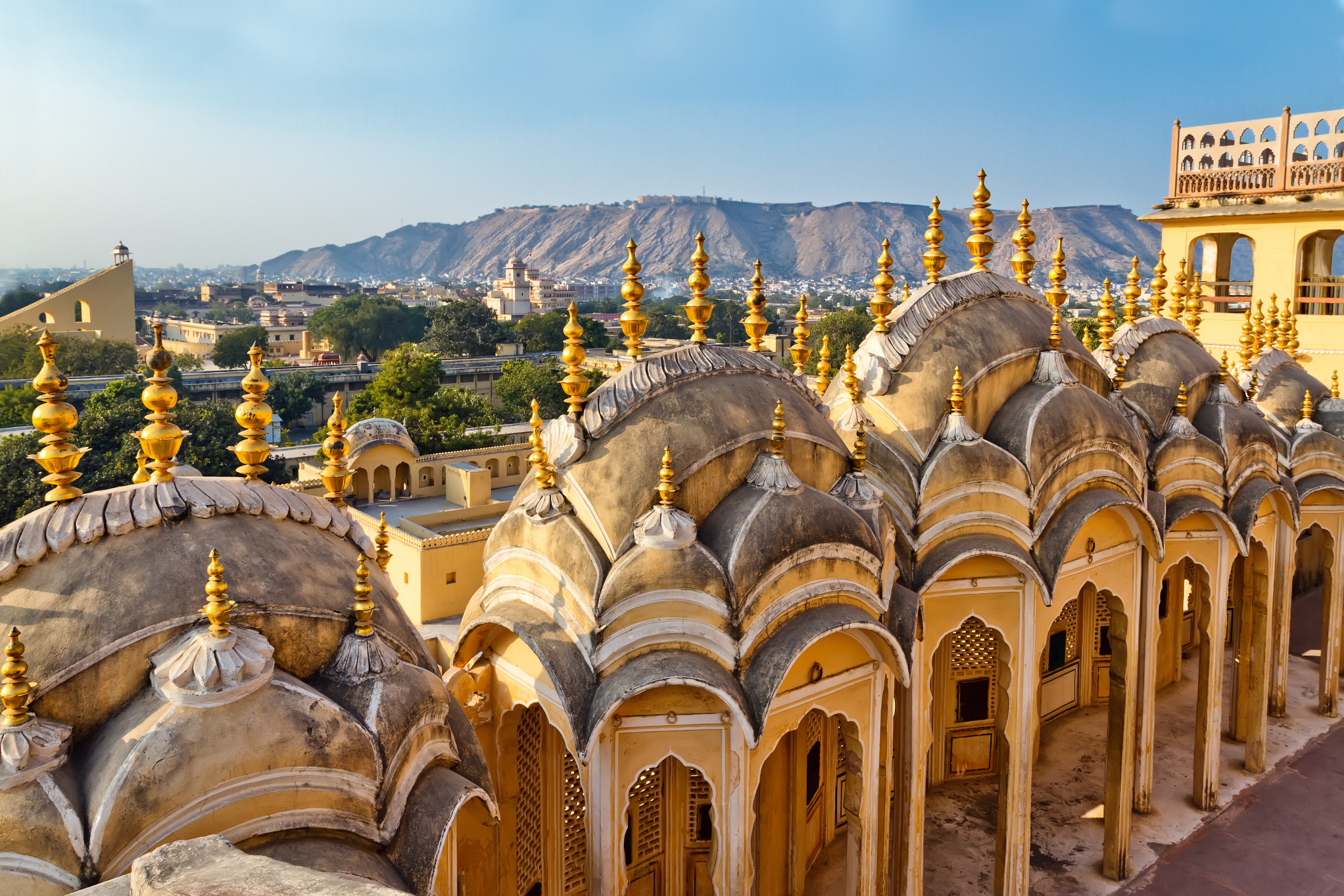From hiking in India's mountainous north to exploring opulent palaces and buzzing cities, India is a destination of contrasts and the ultimate feast for the senses. Get the lowdown on where to start on the adventure of a lifetime.
DELHI

For most travellers Delhi is the first stop on a trip to India and it’s worth spending a couple of days here to explore the city. It’s split into two halves: the first is chaotic and vibrant Old Delhi, which was originally the Mughal capital of Shahjahanabad, created by Shah Jahan (of Taj Mahal fame) when he moved the court from Agra to Delhi. Here, highlights include the UNESCO World Heritage Red Fort and Jama Masjid, India’s largest mosque. In contrast, New Delhi – which was designed by Edward Lutyens and built by the British in the early 20th-century before the capital was transferred from Calcutta – is all wide, tree-lined avenues and classical buildings. Don’t miss the impressive Humayan’s Tomb, the colourful flower markets or sampling the delicious street food (try golgappas, fried dough stuffed with chickpeas and spiced potatoes). From April to October, the weather is hot; the monsoon arrives at the end of June, along with an increase in humidity and the brief, mild winter starts in late November.
BACK TO TOP
RAJASTHAN
This extraordinary region is home to some of India’s most famous cities, as well as magnificent forts, imperial palaces, tiger sanctuaries and raw desert.
RANTHAMBORE NATIONAL PARK

A former hunting ground of the Maharajas of Jaipur, now Ranthambore National Park is a vast wildlife reserve home to tigers, leopards, hyenas, marsh crocodiles, wild dogs and much more (tigers are easiest to spot between February to March when the foliage is less dense). Also within the park is Padam Talao Lake, known for its abundance of water lilies and the 10th-century UNESCO World Heritage Ranthambhore Fort which houses the Ganesh Mandir Temple. The best place to stay is SUJAN Sher Bagh, a 1920s inspired luxury tented camp. An ideal stop for first timers on the Rajasthan circuit.
BACK TO TOP
JAIPUR

Nicknamed The Pink City on account of the colour of its buildings, the capital of Rajasthan has several UNESCO World Heritage sites, including the 16th-century Amer Fort (also known as the Amber Palace), built from red sandstone and marble; and Janter Mantar, an assortment of astral devices constructed by the founder of Jaipir - Rajput King Sawai Jai Singh II. Marvel at the world's biggest stone sundial! Other highlights are the City Palace, which remains the residence of the former royal family and Jaipur’s many bazaars. The city of one of the biggest exporters of shoes so expect to be tempted to make a purchase.
BACK TO TOP
JODHPUR

Known as the Blue City of India thanks to its buildings (theories on the reason for their colour range from warding off termites to being a favourite of the Brahmin caste), Jodhpur is perhaps most famous for its imposing 16th-century Mehrangarh Fort and palace that is now a museum. It overlooks the old city, which is surrounded by six miles of walls. For the best views, it’s possible to zipline your way around the fort. To tap into the region’s culture, book to see a Tera Taali folk dance performance, performed by the Kamada tribes who are traditional snake charmers. A great way to get out of the city is a rural safari with an expert guide who will take you to see local villages; travel by jeep or bicycle.
BACK TO TOP
NARLAI

Deep in the Aravalli Hills, the village of Narlai offers a brilliant insight into rural life. On the outskirts is a traditional stepwell, originally designed to provide water access for the Maharaja; today, Red Savannah can arrange an atmospheric, candle-lit Rajasthani dinner on the stepwell. In the surrounding area, there’s a great chance of spotting leopards, especially around the Jawai Bandh, a dam built across the Jawai River. Keep an eye out for birdlife such as spoonbills, flamingos, cranes and cormorants too.
BACK TO TOP
UDAIPUR

With a backdrop of the Aravalli Hills and magical setting on the banks of Lake Pichola, it’s no wonder that Udaipur is considered one of the most romantic cities in Rajasthan. The winding streets are lined with traditional havelis, temples and shops where you can pick up traditional textiles and handcrafted souvenirs. The City Palace, which was constructed over nearly 400 years, with contributions from several rulers of the Mewar dynasty, fuses Rajasthani and Mughal architectural styles (it’s on the east bank of the lake and contains several palaces and temples within its complex). Red Savannah can arrange all kinds of innovative activities, including visiting a family for an authentic Indian cooking lesson and a cycle tour (see experiences for more detail). The best place to stay is the legendary Taj Lake Palace hotel (James Bond fans may recognise it from Octopussy), built over 200 years ago as a summerhouse for the young Maharana of Udaipur.
BACK TO TOP
JAISALMER

Set in the heart of the Thar Desert on a ridge of yellow sandstone, this city is crowned by the ancient Jaisalmer Fort. Built in 1156, its sandstone walls appear to change colour as the sun sets (it resembles a giant sandcastle). A large proportion of Jaisalmer’s population still live inside the fort where, attractions not to be missed, are the Raj Mahal, Jain temples and Laxminath temple, which is dedicated to the Hindu god Vishnu and Goddess Lakshmi. Stay in style at SUJAN The Serai, a beautiful luxury tented camp just 30-minutes’ drive outside the city, which is ideally placed for a camel safari in the desert.
BACK TO TOP
AGRA & THE TAJ MAHAL

Tick off two of India’s blockbuster UNESCO World Heritage Sites at once with an itinerary that combines the Taj Mahal and the Agra Fort. Dating back to 1632, the magnificent Taj Mahal was built by order of the Mughal emperor Shah Jahan in memory of his favourite wife, Mumtaz Mahal. Theirs are the only bodies that lie in this giant mausoleum; they were together for 19 years and had 14 children together. It took 20,000 artisans two decades to construct the temple which is one of the seven wonders of the world. Completed a century earlier, the sandstone red Agra Fort was the royal residence and military fortress of Mughal emperor Akbar (it was a prosperous era for Agra, which served as the capital of the Mughal court during the 16th and 17th centuries). One of the most scenic ways to travel to Agra is the 1.5 hour fast train from Delhi which whizzes past remote villages and rural countryside.
BACK TO TOP
KERALA

A world away from the buzz and cacophony of the north, laidback Kerala is a go-slow getaway with golden sandy beaches, sleepy backwaters, wildlife reserves and tea plantations. North of the region’s capital Thiruvananthapuram, the port city of Cochin (also known as Kochi) is a honeypot of excellent heritage hotels, cafes and restaurants. Its famous fishing nets can be seen lined up along the beaches and around the Cochin Fort, which combines Dutch, Portuguese and British colonial architecture. The Kerala backwaters are still used to transport goods such as rice, coconuts and bananas, and one of the best ways to explore them is on a barge (available to hire for a day or overnight). An equally fun mode of transport is the train journey up the west coast to Nileshwar which has a gorgeous sandy, quiet beach. In complete contrast, inland Munnar is all rolling green hills and tea plantations – great for walking. This is also the region to watch Kathakali, a classical Indian dance-drama where the performers don ornate make up and huge headdresses to enact mythical stories of the Hindu gods.
BACK TO TOP
VARANASI

Set on the banks of the Ganges River with a labyrinth of streets leading inland, Varanasi is the spiritual centre of northern India. Hindus believe that dying here and being cremated along the Ganges riverbanks allows the cycle of rebirth to be broken and salvation to become possible. The city is known for its many ghats (steps leading down the riverbank to the water), where pilgrims perform rituals. Hindus cremate their deceased at the Manikarnika Ghat, and the Harishchandra Ghat. It's also worth visiting the Dashashwamedh and the Panchganga ghats. Expect to see people bathing in the river and pyres burning, the smell of incense, and a lot of music and noise – it’s a real assault on the senses.
Top things to do include a Ganges boat trip to observe Hindu rituals and witness an evening Aarti Ceremony which takes place on the riverbank. Huge brass lamps are lit, incense is burnt and flowers laid as the religious chanting begins. Don’t miss Varanasi’s temples either: Kashi Vishwanath Temple dedicated to Lord Shiva, Durga Temple (also known as Monkey Temple) and Tulsi Manas, are three of note.
BACK TO TOP
WILDLIFE RESERVES OF MADHYA PRADESH

The Madhya Pradesh region has a trio of noteworthy national parks, ideal for spotting wildlife such as leopards, monkeys, sloths, wild boar, exotic birds and of course, tigers. Bandhavgarh National Park is the smallest of the national parks but has the highest density of Bengal tigers while Kanha National Park - the inspiration for Kipling’s The Jungle Book - has more streams and high grasses as opposed to thick forest. The least explored of all though (and therefore the best place to see tigers), is Pench National Park. Stay a few minutes from the entrance at Baghvan, a Taj Safari, which consists of 12 charming bungalows. February to April is the best time to spot tigers.
WEST BENGAL
BACK TO TOP
KOLKATA

The infamous East India Company established a trading post at Kolkata (also known as Calcutta) in 1690 but it wasn’t until just over a century later that it became the first capital of the British Raj. Today, it’s known as a very different type of capital – India’s capital of IT. Considerable evidence of its colonial history remains (including the magnificent Victoria Memorial) but this city in north east India is cultural and creative; the intellectual heart of the country. The Bengalis love cricket (Calcutta Cricket Club is an institution) and the parks are often filled with people playing the sport. Visit the vibrant markets and bazaars, and sail along the Hooghly River which runs to the Ganges.
BACK TO TOP
DARJEELING

Part of the state of Sikkim in the foothills of the Himalayas, northern Darjeeling is mountainous and green. The cooler climate – the British established a hill station here and came to escape the heat of the plains – is excellent for tea cultivation. Stay at the Glenburn Tea Estate, which is housed in a pair of former tea-planters’ bungalows and has panoramic views of rolling tea country. Make an early start one morning for the drive to Tiger Hill, where you can watch the sun rise over the Himalayas. It’s also fun to take the Toy Train, a historic railway route from Darjeeling (see experiences).
BACK TO TOP
NAGALAND
The northeast mountainous state of Nagaland, which borders Myanmar, is known for its tribal culture. The capital of the state, Kohima, was the site of one of the bloodiest battles of WWII, between the British who were supported by Naga tribespeople, and the Japanese (some of the battle took place on the tennis court of the British deputy Commissioner’s house). Today, the biggest draw is the colourful Hornbill Festival every December, when 16 indigenous tribes gather to celebrate their heritage through music, sports, food and crafts.
BACK TO TOP
LADAKH

This arid mountainous region in India’s north is dotted with colourful prayer flags, Buddhist gompas and whitewashed stupas. It’s heavenly walking country; hike from village to village, staying overnight in traditional houses. Note: it’s virtually inaccessible between October and May.























